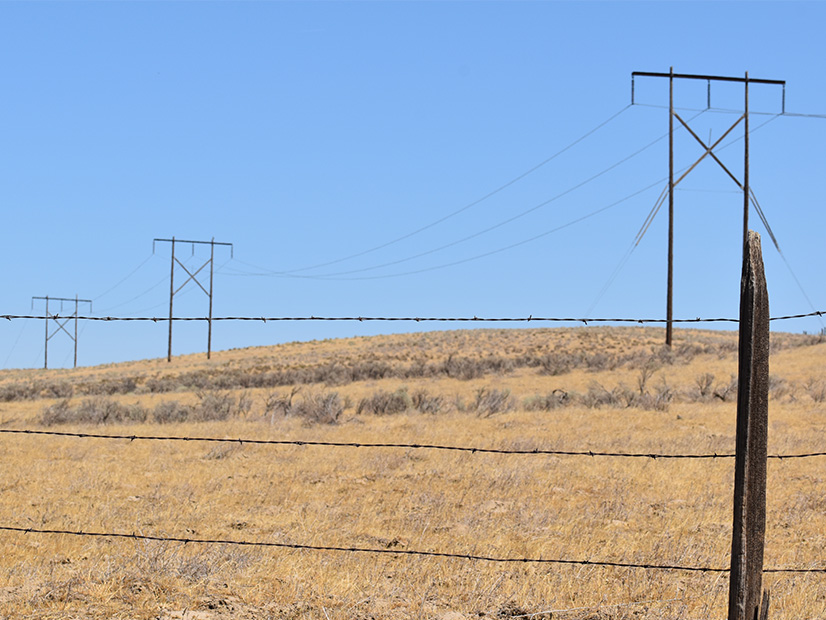Oregon’s Department of Energy (ODOE) is seeking input from power industry stakeholders to help produce a study that could convince lawmakers to obligate the state’s utilities to participate in an RTO.
The effort comes on the heels of the passage of Senate Bill 589, which requires the department to prepare a report outlining the “benefits, opportunities and challenges posed by development or expansion of regional transmission organization” in Oregon.
In kicking off the initiative last month, the ODOE appointed an Oregon RTO Advisory Committee to help guide the process. The committee includes representatives from the state’s two investor-owned utilities (Portland General Electric and PacifiCorp), consumer-owned utilities, independent power producers, the legislature, the governor’s office, organized labor and environmental groups.
The department took its second step last week by creating a portal on its website to solicit opinions and expertise from a broader sweep of stakeholders and residents. The questionnaire begins with a survey asking respondents to share their opinions about the top benefits and challenges of developing an RTO for Oregon. It then poses a series of “foundational” questions that seek stakeholders’ insight into:
- any legal barriers Oregon entities might face in joining an RTO;
- whether Oregon’s net benefits from an RTO might be greater or less than those benefits identified in previous technical analyses, and whether further analysis is needed;
- what costs retail customers might assume from utility membership in an RTO — and how those costs might be balanced against benefits; and
- what core principals should guide the state’s evaluation of joining an RTO.
A series of technical questions asks respondents to share their thoughts on:
- transmission rates and revenues in an RTO;
- transmission planning and operations, including generator interconnection processes, planning and expansion, and cost allocation;
- potential benefits or consequences with respect to renewable resources, including deployment, location and impacts on in-state manufacturing of clean energy technologies and related jobs; and
- possible environmental impact from an RTO, such as changes to the dispatch of thermal generating units and the challenges from greenhouse gas accounting over different regulatory regimes.
The questionnaire additionally seeks input on RTO governance design, asking participants to identify best practices and to consider how a governance structure would ensure “meaningful” state oversight and protections for retail customers. The survey concludes with questions about the best market design, alluding to examples such as the real-time Western Energy Imbalance Market (EIM), the EIM plus a day-ahead market, a full West-wide RTO or multiple RTOs.
Responses are due by Sept. 13. The Advisory Committee will hold its first meeting Sept. 20, followed by another on Oct. 6. The ODOE expects to deliver a draft report to the committee by Nov. 24, and the final study will be submitted to the legislature by Dec. 31.
Momentum Building?
Oregon’s move to examine RTO participation is part of a growing trend among Western states. In May, Nevada lawmakers passed a sweeping energy bill (SB448) that included a provision requiring the state’s transmission owners to join an RTO by 2030. (See Colorado Utilities Examine Market Membership.) Colorado followed suit with a similar bill (SB 72) in June.
And last month the Arizona Corporation Commission asked to establish a new proceeding to investigate the “question of mandatory or voluntary participation in regional transmission organizations” by the state’s utilities. (See Arizona to Weigh RTO Membership.)
The Western power sector has for decades flirted with the idea of a West-wide RTO or subregional organized markets, but agreement has proved to be elusive in a region in which many participants are suspicious of the increased federal oversight an organized market entails and wary of any arrangement dominated by California.
In 2016, California Gov. Jerry Brown postponed CAISO’s efforts to extend its own market into other parts of the West after in-state critics expressed fears that the plan was being rushed to meet legislative deadlines, while out-of-state critics remained apprehensive of what they called a “California-centric” proposal. (See Governor Delays CAISO Regionalization Effort.)
The following year, legislators failed to pass a bill outlining mandatory steps for CAISO to follow as it pursued regionalization. (See CAISO Regionalization, 100% Clean Energy Bills Fizzle.)
Another regionalization bill, introduced in 2019, would have transformed the ISO’s governance structure from one controlled by California officials to a multistate body, addressing a key concern of Westerners reluctant to sign up to a market subject to the outsized influence of California. That bill died in committee, in part because of opposition from labor unions concerned about a loss of in-state renewable energy project construction jobs. The bill also divided environmental groups, with some — including the Sierra Club — worried that a more closely integrated market relationship with coal-burning states would compromise California’s aggressive environmental objectives. (See CAISO Expansion Bill Dies in Committee.)
But where CAISO’s regionalization efforts have sputtered, the expansion of its voluntary, real-time EIM has progressed steadily since it was launched in 2014. By 2023, it will include 21 members representing about 78% of the electricity load in the WECC area. The ISO is also working to expand the scope of the market with day-ahead trading, a measure that falls far short of creating an RTO. (See CAISO Proposal Sets Course for EIM Day-ahead.)
A recent U.S. Department of Energy-funded study initiated by Utah Gov. Spencer Cox’s Office of Energy Development in collaboration with state energy offices in Colorado, Idaho and Montana found that a West-wide RTO would yield about $2 billion on annual benefits by 2030, nearly triple the returns of an EIM day-ahead market, reducing production and capacity costs by $599 million and $718 million, respectively. (See Study Shows RTO Could Save West $2B Yearly by 2030.)
The study found that Oregon would be the third-largest beneficiary of annual benefits at $148 million, behind Washington ($351 million) and California ($319 million).




